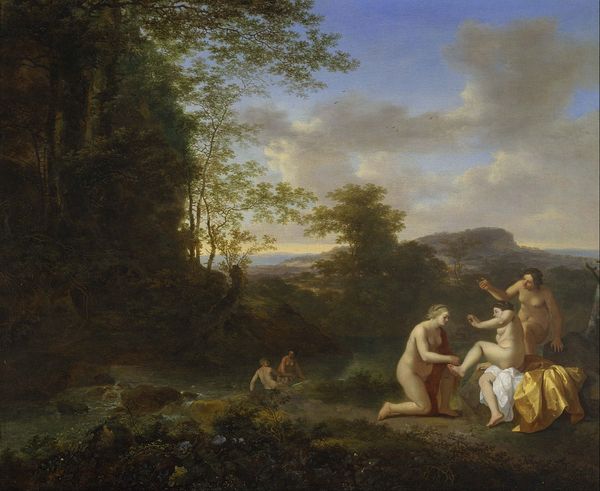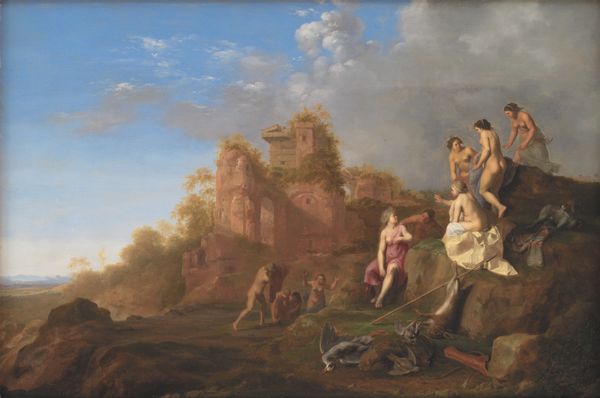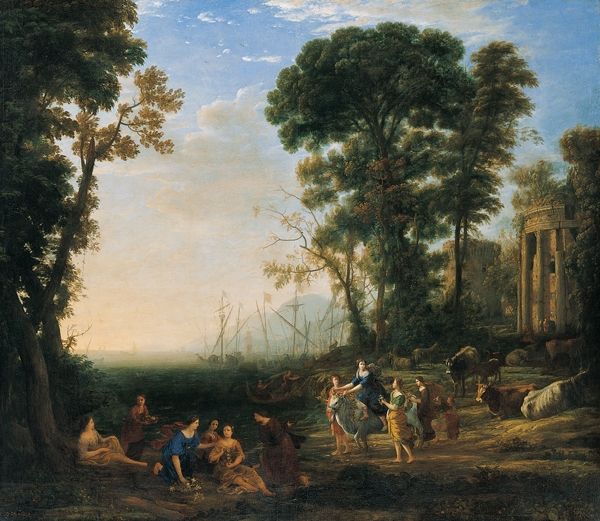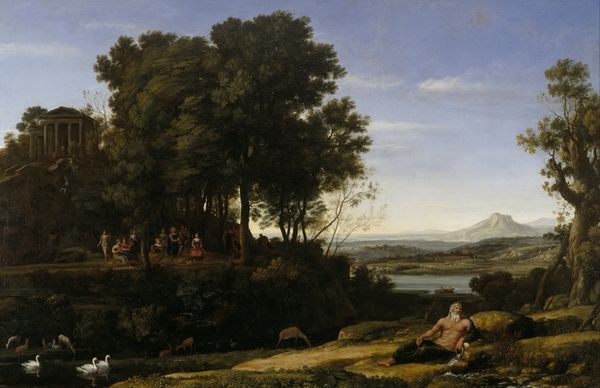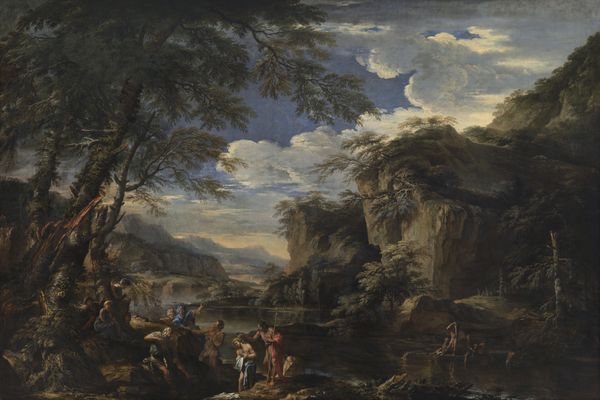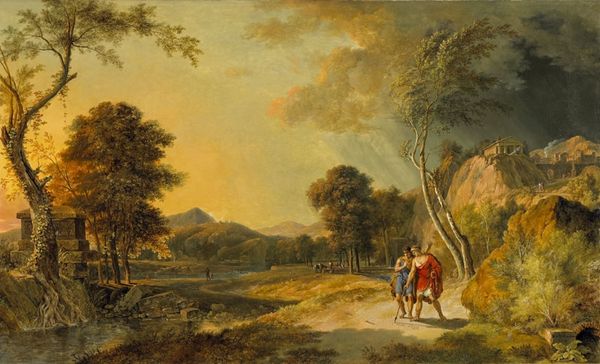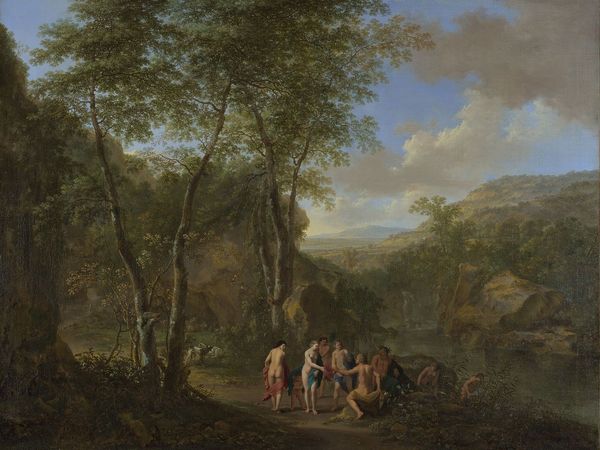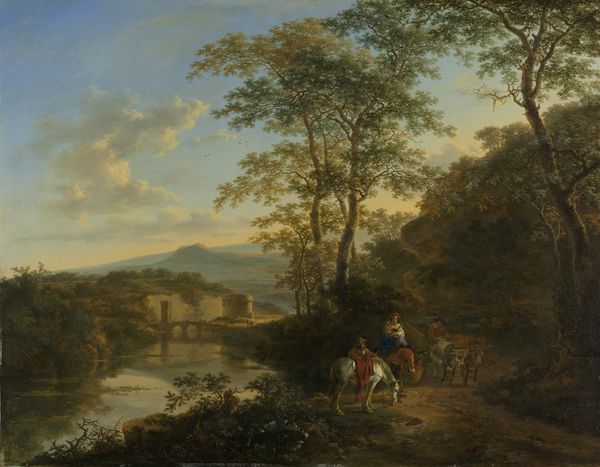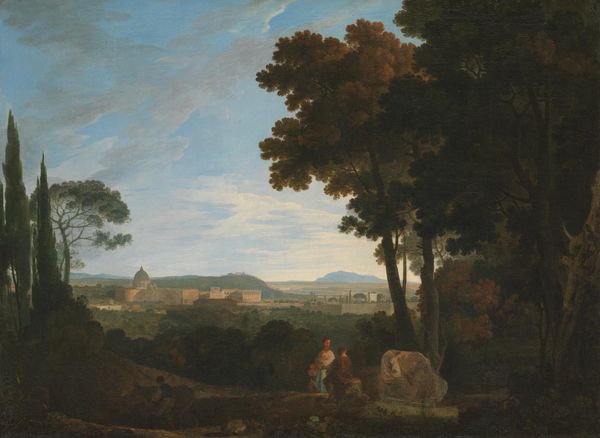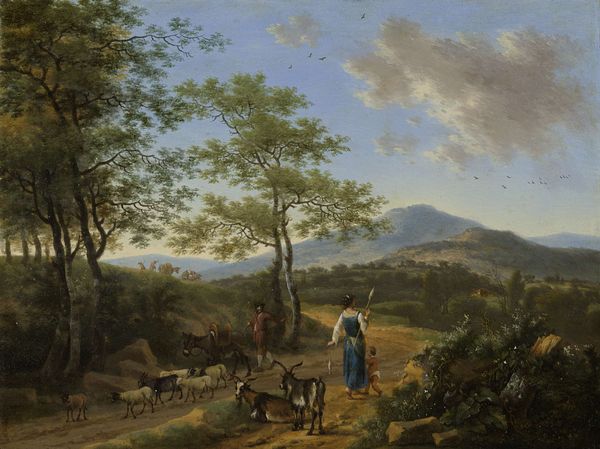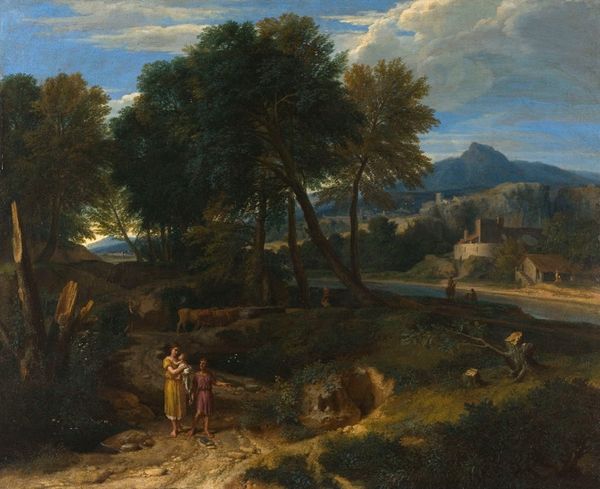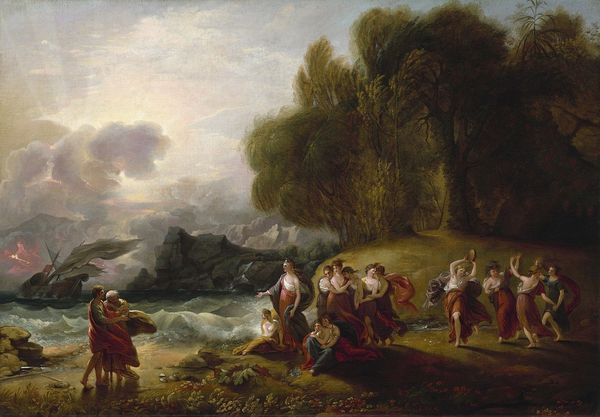
oil-paint
#
allegory
#
baroque
#
oil-paint
#
landscape
#
figuration
#
oil painting
#
roman-mythology
#
mythology
#
history-painting
Copyright: Public domain
Editor: This is "The Judgement of Paris," painted by Claude Lorrain in 1645 using oil. What immediately strikes me is the juxtaposition of the intimate gathering of figures against the vast, idyllic landscape. What do you make of it? Curator: Note how Lorrain, even within the baroque style, is drawn to light, space, and idyllic rendering, softening a potentially bombastic theme. Look at the cultural memory at play here: The Judgement of Paris is a pivotal myth. It depicts Paris, a Trojan prince, being asked to judge which of three goddesses—Hera, Athena, or Aphrodite—is the fairest, setting in motion the events that lead to the Trojan War. Editor: Right, I see the figures now, but they are rather small compared to the overall landscape. Curator: Exactly! Lorrain subverts the heroic scale. What does that suggest, when myth is reduced to almost anecdotal status within a larger landscape? It’s as if he’s suggesting the eternal quality of nature dwarfs human conflict, yes? Think about how, across time, humans place significance onto symbols that are soon obscured. Here, are we reflecting on the transient nature of beauty and power? The cost? Editor: I hadn't considered the relationship between scale and the weight of the story itself. Curator: Mythology often presents grand narratives, but Lorrain seems more interested in the lingering presence of the natural world and its effect upon such grandiosity. Editor: It makes me wonder what parts of our present are equally fleeting when framed against something so vast, a poignant thought. Curator: Absolutely! Lorrain gives us an invitation to contemplate the very human habit of creating meaning within an uncaring universe.
Comments
No comments
Be the first to comment and join the conversation on the ultimate creative platform.
